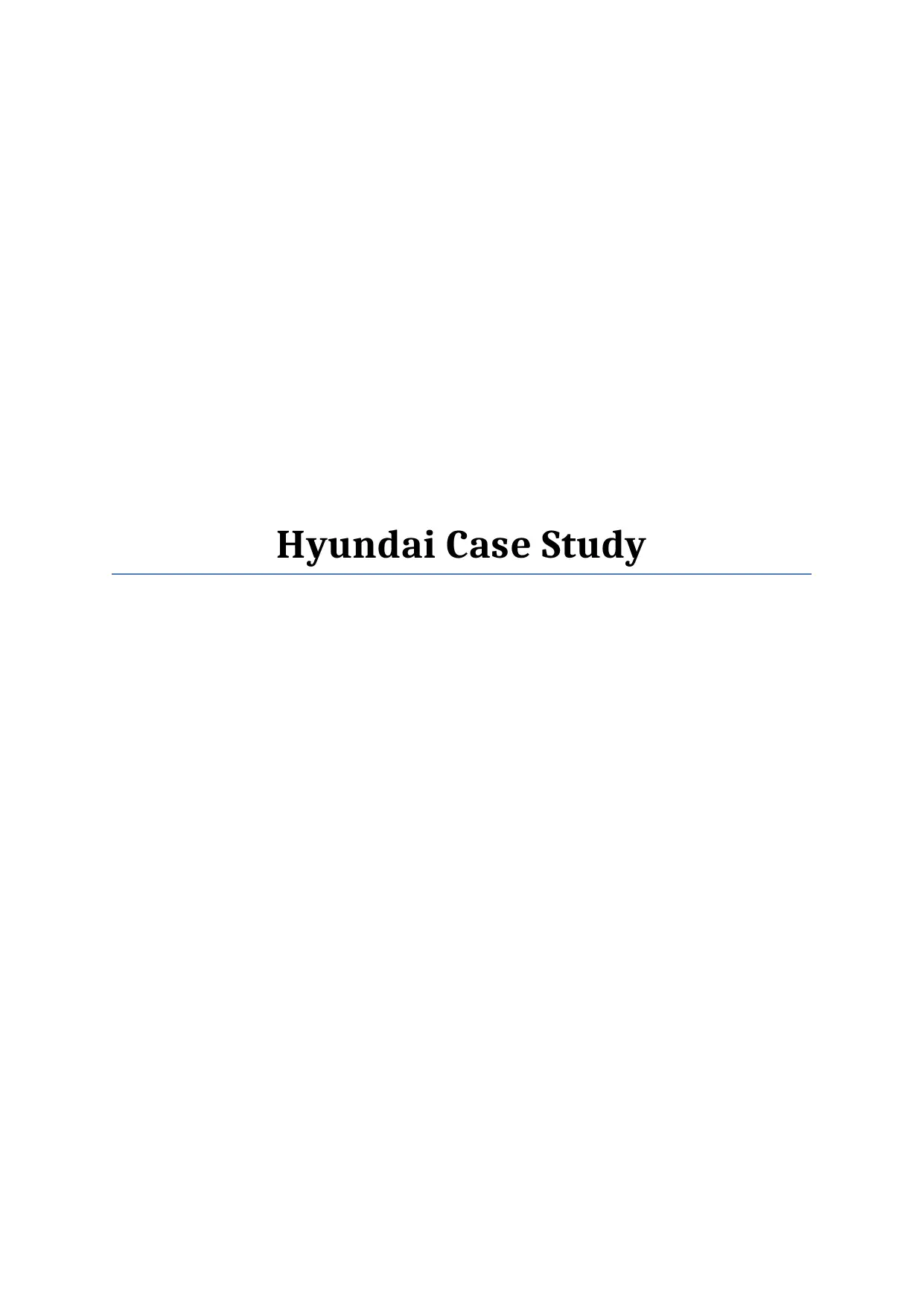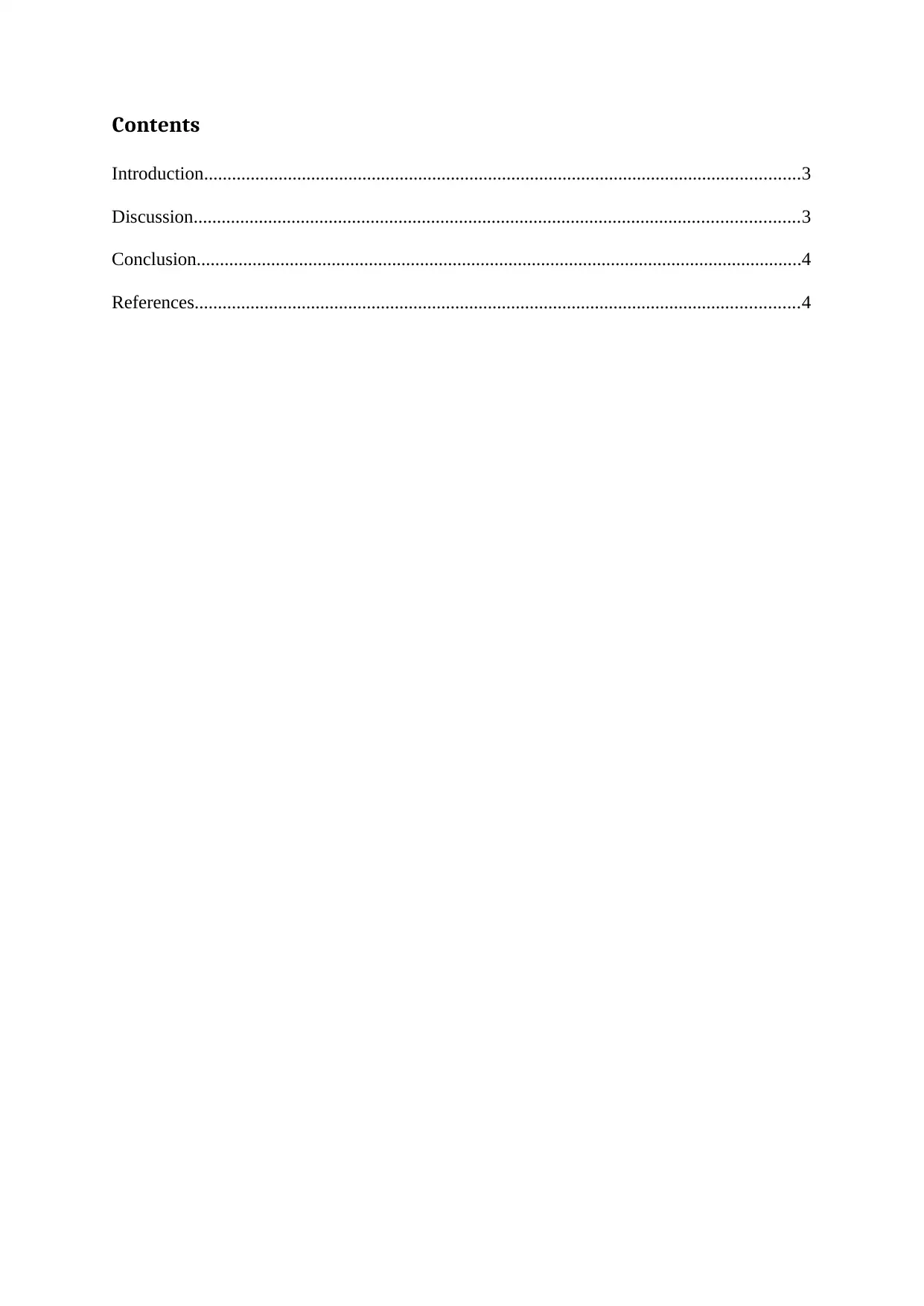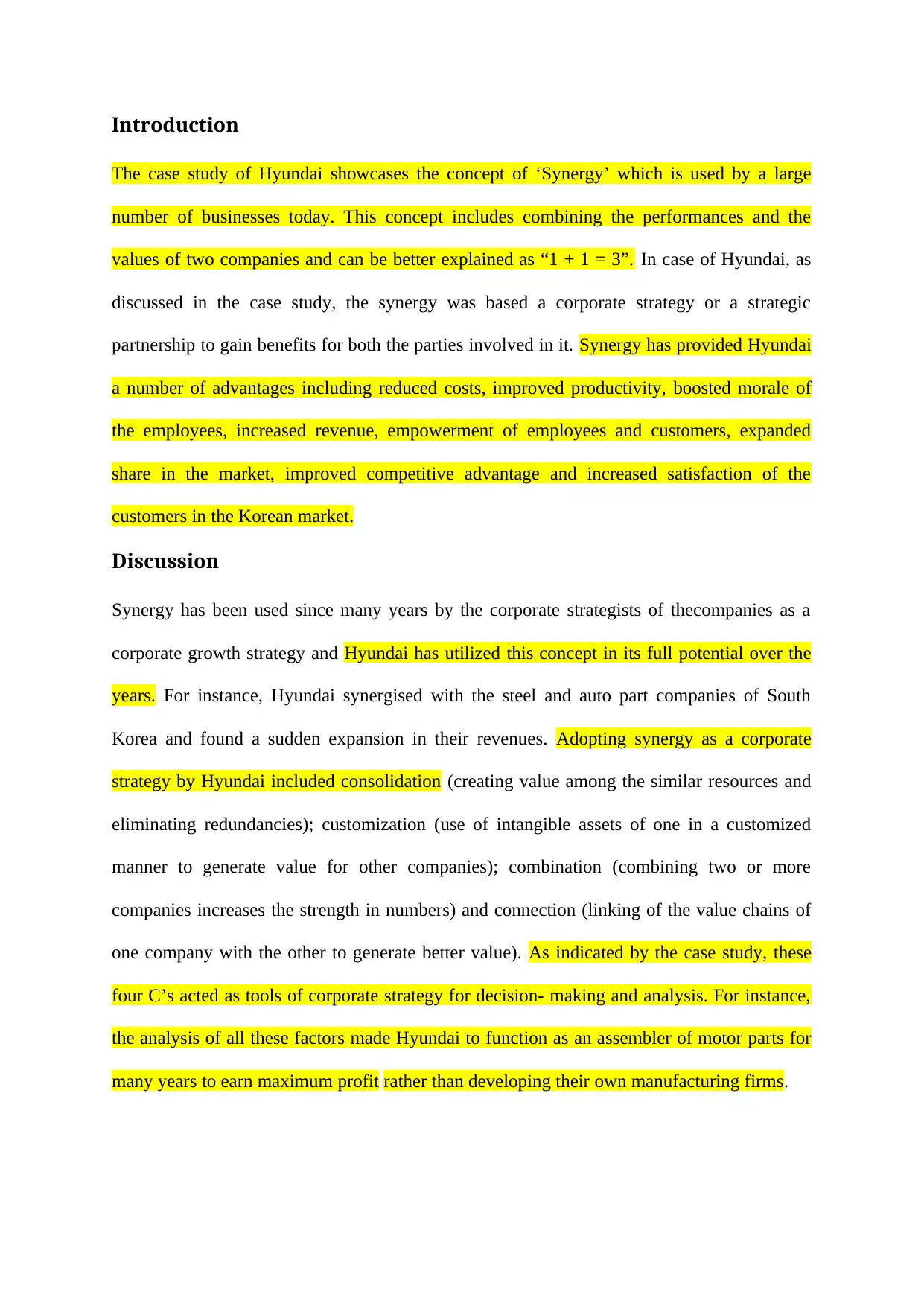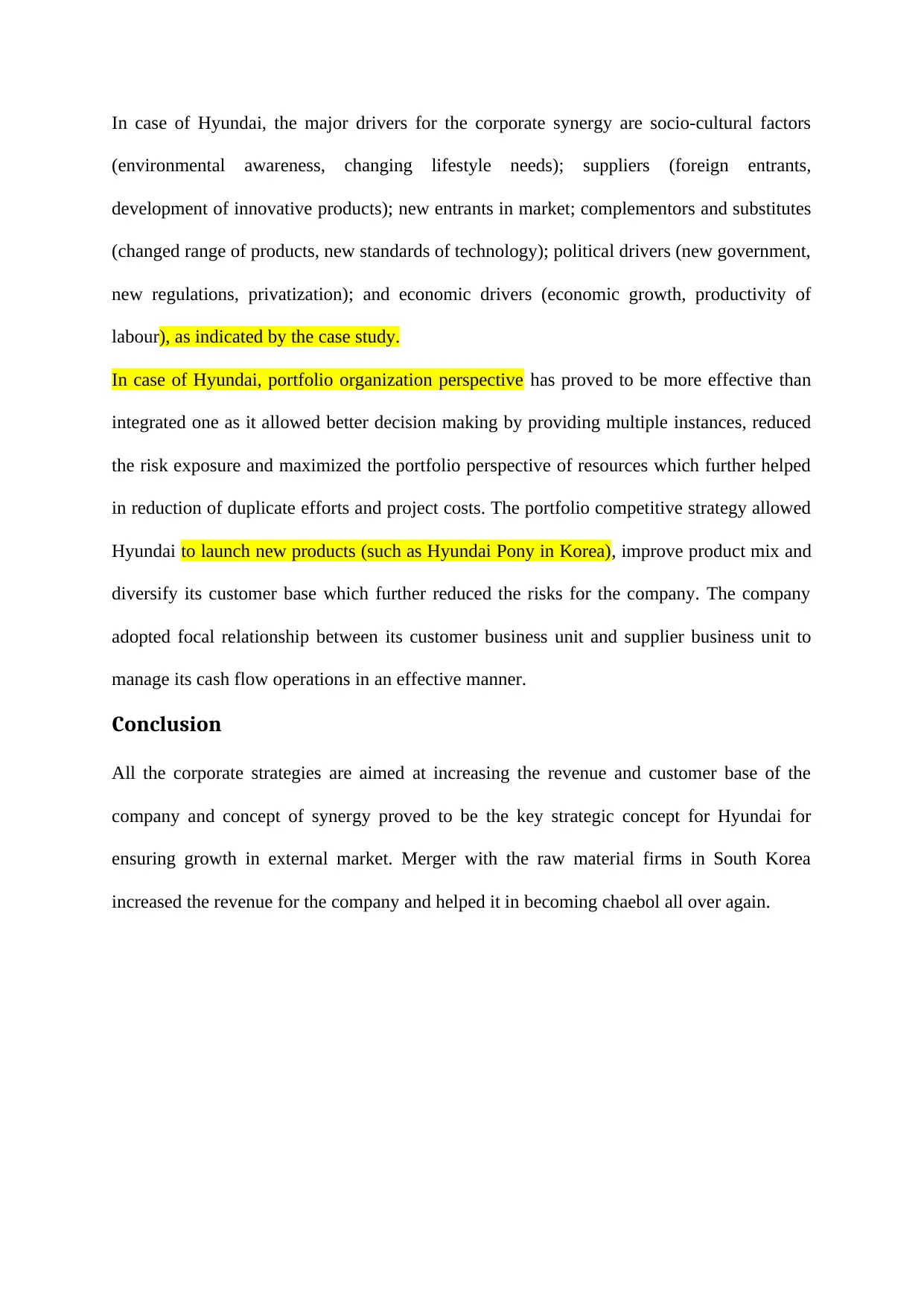Hyundai Case Study: Synergy, Strategy, and Market Analysis
VerifiedAdded on 2021/10/13
|5
|596
|34
Case Study
AI Summary
This case study examines Hyundai's strategic use of synergy, a concept where combining resources and values leads to increased benefits. The analysis covers how Hyundai leveraged synergy with suppliers and partners, particularly in the South Korean market, to reduce costs, boost employee morale, expand market share, and gain a competitive edge. The study discusses how Hyundai's strategic approach incorporated consolidation, customization, combination, and connection to maximize value. It also explores the key drivers behind Hyundai's corporate strategies, including socio-cultural, economic, and political factors. Furthermore, the study highlights the effectiveness of a portfolio organization perspective over an integrated one for decision-making, risk reduction, and resource optimization. The company employed a focal relationship between its customer business unit and supplier business unit to manage its cash flow effectively. The conclusion emphasizes synergy's role in driving revenue and customer base growth, particularly through mergers with raw material firms, ultimately contributing to Hyundai's success.
1 out of 5












![[object Object]](/_next/static/media/star-bottom.7253800d.svg)